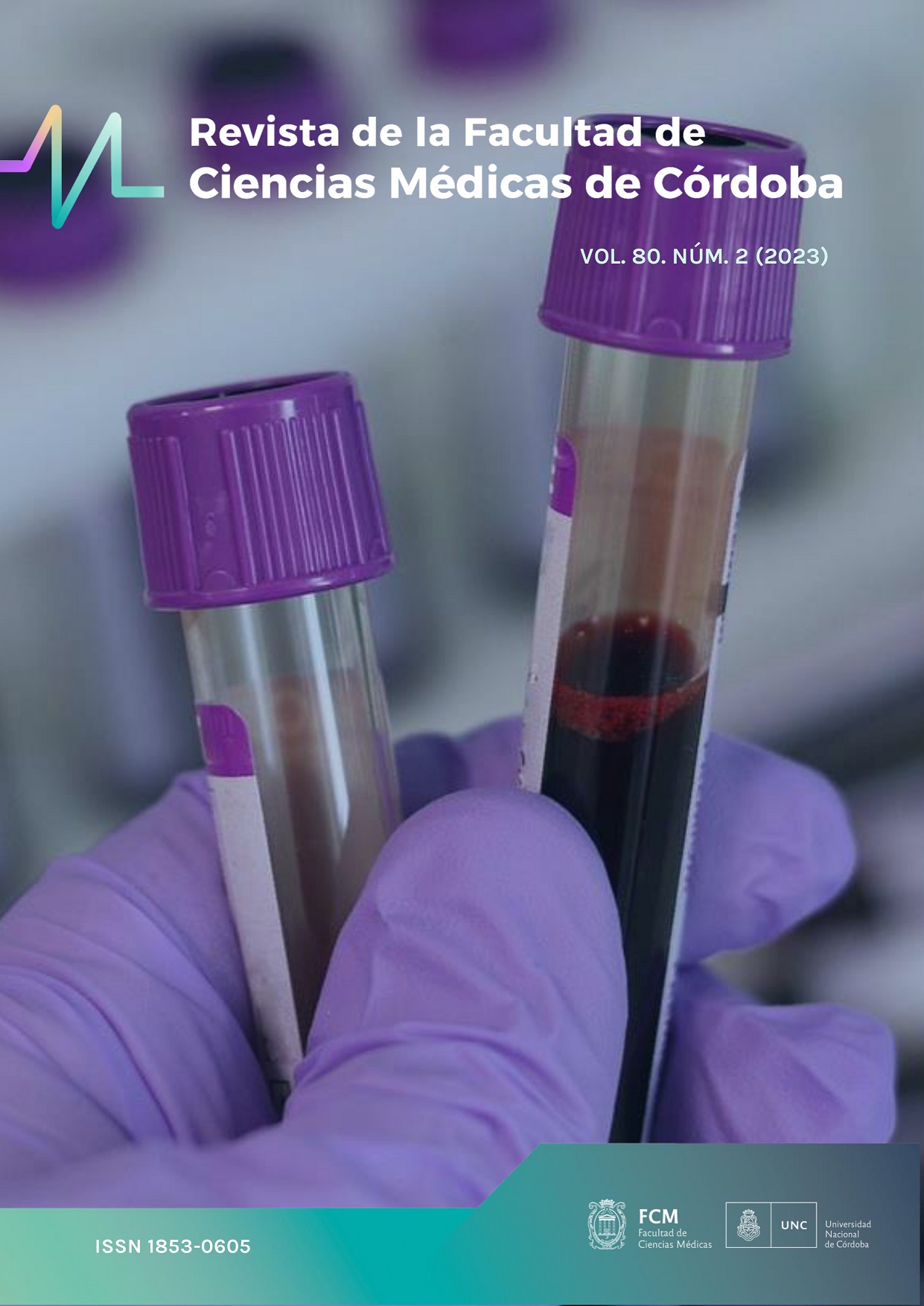Analysis on risk factors associated with birth defects in newborns in the area of the Matanza-Riachuelo river basin.
DOI:
https://doi.org/10.31053/1853.0605.v75.n4.20284Keywords:
congenital abnormalities, air pollutants, risk factors, Argentina,Abstract
Introduction: Matanza-Riachuelo basin is one of the most polluted sites in Argentina, with 4,885,000 inhabitants. This study evaluated risk factors associated with congenital anomalies (CA) and low birth weight. Methods: case-control study in three hospitals belonging to the National Network of Congenital Anomalies (RENAC) for one year. We evaluated the association of socioeconomic level, reproductive factors, and distance between place of residence to industrial pollution places and from watercourses of the river, with low birth weight and CA. Results: The prevalence of congenital anomalies in newborn was 1.93% (95% CI:1.64 - 2.25). There were associated risk factors such as acute maternal diseases and consumption of drugs. Cases had weight and gestational age significantly lower and higher maternal age than the controls. We did not find association between low birth weight and prevalence of congenital anomalies with distance from the housing of pregnant women to sources of contamination. Conclusions: This study is the first research in Argentina with geo-referenced data and newborn with CA. It has shown the feasibility of carrying out this type of research to evaluate risk factors in the RENAC. Future research to assess specific type of CA should be conducted to corroborate the results of this studyDownloads
References
1. DEIS, Estadísticas Vitales, Información Básica Año 2016. DEIS: Programa Nacional de Estadísticas de Salud. [Disponible en: www.deis.msal.gov.ar] [Consulta: 24-05-2018].
2. Observatorio Metropolitano [Disponible en http://www.observatorioamba.org/planes-y-proyectos/cuencas/cuenca-matanza-riachuelo] [Consulta: 24-05-2018].
3. Autoridad de Cuenca Matanza- Riachuelo (ACUMAR), Eje ambiental [Disponible en http://www.acumar.gob.ar/eje-ambiental/] [Consulta: 24-05-2018].
4. Castilla EE, JS Lopez-Camelo, H Campana, and M Rittler. Epidemiological methods to assess the correlation between industrial contaminants and rates of congenital anomalies. Mutat Res, Dec 2001; 489(2-3): 123-45.
5. Groisman B, Bidondo MP, Barbero P, Gili JA, Liascovich R; RENAC Task Force.
RENAC: National Registry of Congenital Anomalies of Argentina. Arch Argent Pediatr. 2013 Dec;111(6):484-94
6. Segunda Encuesta nacional de factores de riesgo 2009 http://www.msal.gob.ar/images/stories/bes/graficos/0000000570cnt-2014-10_encuesta-nacional-factores-riesgo-2011_informe-final.pdf [Consulta: 24-05-2018].
7. Castilla E, Lopez Camelo J, Paz J, Orioli I Prevención primaria de los defectos congénitos. Ed. Fio Cruz 1996. Rio de Janeiro.
8. Pawluk MS, Campaña H, Gili JA, Comas B, Giménez LG, Villalba MI, Scala SC, Poletta FA, López Camelo JS. Adverse social determinants and risk for congenital anomalies.Arch Argent Pediatr. 2014 Jun;112(3):215-23.
9. Vrijheid M, Dolk H, Stone D, Abramsky L, Alberman E, Scott JE. Socioeconomic inequalities in risk of congenital anomaly. Arch Dis Child. 2000 May;82(5):349-52.
10. Silvestrin S, Silva CH, Hirakata VN, Goldani AA, Silveira PP, Goldani MZ. Maternal education level and low birth weight: a meta-analysis. J Pediatr (Rio J). 2013 Jul-Aug;89(4):339-45.
11. Geschwind SA, Stolwijk JA, Bracken M, et al. Risk of congenital malformations associated with proximity to hazardous waste sites. Am J Epidemiol 1992;135:1197– 1207.
12. Dolk H, Vrijheid M, Armstrong B, et al. Risk of congenital anomalies living near hazardous-waste landfill sites in Europe: the EUROHAZCON study. Lancet 1998;352:423–7.
13. Elliott P, Briggs D, Morris S, et al. Risk of adverse birth outcomes in populations living near landfill sites. BMJ 2001;323:363–8.
14. Dummer TJB, Dickinson HO, Parker L. Adverse pregnancy outcomes near landfill sites in Cumbria, Northwest England, 1950–1993. Arch Environ Health 2003;58:692–8.
15. Palmer SR, Dunstan FDJ, Fielder H, et al. Risk of congenital anomalies following the opening of landfill sites. Environ Health Perspect 2005;113:1362–5.
16. Gilbreath S, Kass PH. Fetal and neonatal deaths and congenital anomalies associated with open dumpsites in Alaska Native villages. Int J Circumpolar Health 2006;65:133–47.
17. Baldo CC, Campaña H, Gili JA, Poletta FA, Lopez-Camelo JS. Anencephaly and Residence near Textile Industries: An Epidemiological Case-control Study in South America. Journal of Basic & Applied Genetics, 2008;19 (1): 1-10.
18. Sosniak WA, Kaye WE, Gomez TM. Data linkage to explore the risk of low birthweight associated with maternal proximity to hazardous waste sites from the National Priorities List. Arch Environ Health 1994;49:251–5.
19. Marshall EG, Gensburg LJ, Deres DA, et al. Maternal residential exposure to hazardous wastes and risk of central nervous system and musculoskeletal birth defects. Arch Environ Health 1997;52:416–25.
20. Boyle E, Johnson H, Kelly A, et al. Congenital anomalies and proximity to landfill sites. Ir Med J 2004;97:16–18.
21. Nieuwenhuijsen MJ, Dadvand P, Grellier J, Martinez D, Vrijheid M. Environmental risk factors of pregnancy outcomes: a summary of recent meta-analyses of epidemiological studies. Environ Health. 2013 Jan 15;12-6.
22. Martuzzi M. The precautionary principle: in action for public health. Occup Environ Med. 2007 Sep;64(9):569-70.
Downloads
Published
Issue
Section
License
Copyright (c) 2018 Universidad Nacional de Córdoba

This work is licensed under a Creative Commons Attribution-NonCommercial 4.0 International License.
The generation of derivative works is allowed as long as it is not done for commercial purposes. The original work may not be used for commercial purposes.















